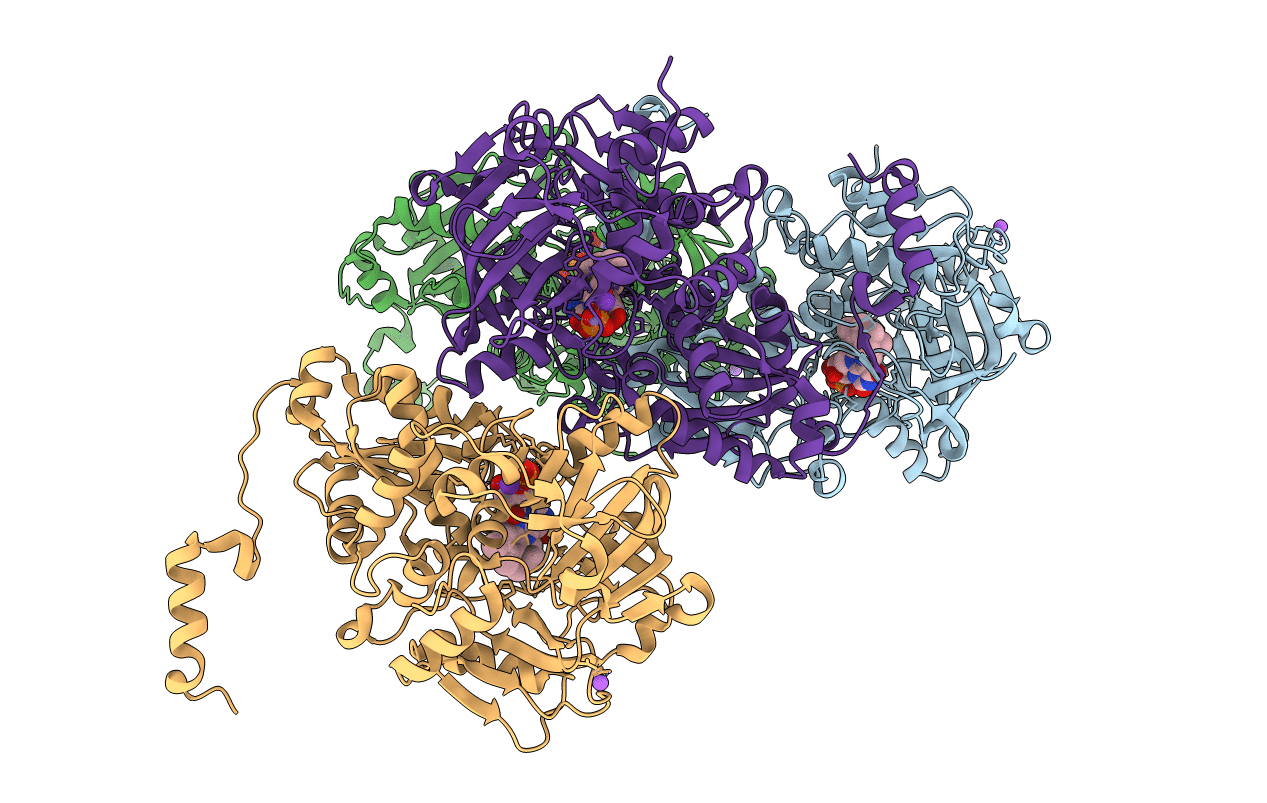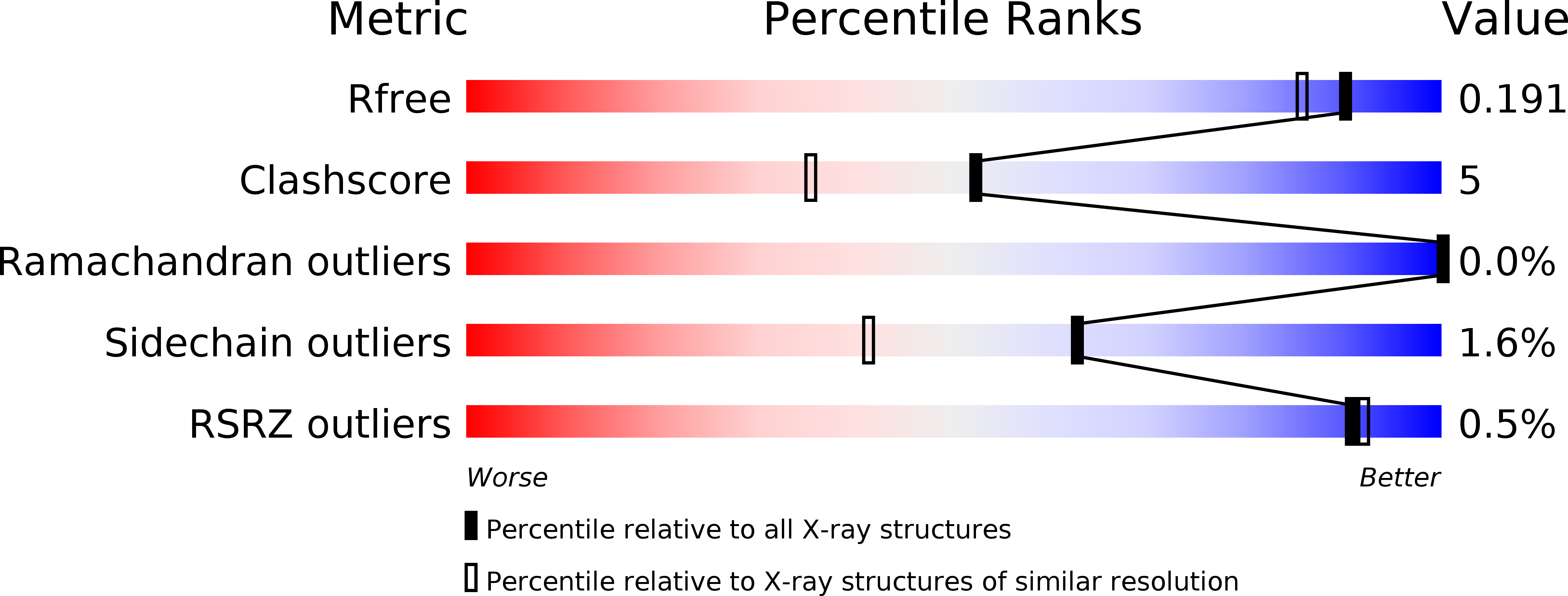
Deposition Date
2015-04-13
Release Date
2015-06-17
Last Version Date
2024-01-10
Entry Detail
PDB ID:
4ZAC
Keywords:
Title:
Structure of S. cerevisiae Fdc1 with the prenylated-flavin cofactor in the iminium form.
Biological Source:
Source Organism:
Host Organism:
Method Details:
Experimental Method:
Resolution:
1.65 Å
R-Value Free:
0.19
R-Value Work:
0.16
R-Value Observed:
0.16
Space Group:
P 1 21 1


